
Alexander Herrera
My research addresses the material and immaterial ways in which social identities materialise and are mapped out in landscapes and material culture. Its long-term perspective draws upon archaeological, ethnohistoric and ethnographic sources, integrated with environmental and historical data, to address heritage as a historically entangled, contested and open-ended process.
In the Andes of northern Peru my studies address how deep histories of settlement, agro-pastoral production and irrigation systems link into mortuary and sacred landscapes through ritual and ceremonial practice. To address the longue durée of broader interactions between people in the Pacific and Amazon basins, including how economic and political interactions shape identity politics, I have conducted archaeological surveys, excavations and ethnographic research, and established collaborations with local communities and local NGOs, as well as anthropologists and geographers, physical anthropologists, hydrologists and paleoclimatologists.
A second area of active research, where I study agrarian heritage at the interface between the Andes and Amazonia, is in southern Colombia. In the Sibundoy Valley I deploy historical cartography and surface archaeological survey together with community heritage mapping to contrast past and present forms of water management and terrace farming, query valley-wide drainage endeavours of the 20th century, and address the role of material and immaterial heritage in indigenous movements. To this end I have established working relationships with indigenous Kamëentsá and Inga communities, geographers and local NGOs.
Further thematic research interests include indigenous technology; the archaeology and anthropology of music and sound, and museums´ contributions to peace building, especially in Colombia. Study of indigenous technologies have led me to work on the potential of ancient water catchment and management technologies to adapt to climate change. Restoration of a pre-Hispanic dam in the Cordillera Negra of Peru in ongoing. Curating the Museum of Andean Technologies in Moro, Peru allowed me to frame technology as historically contingent socio-material enchainment of skills.
Research in the field of archaeomusicology has focussed on the linkages between instruments used in rituals and the landscape emplacement of ceremonial spaces and architecture. In situ testing of shell horn replicas have allowed me to ascertain probable times, locations and trajectories of performance.
Museums for Peace project is an ongoing research and creative project that builds on my experience curating and cataloguing archaeological, ethnographic and art collections. Intended as a museological contribution to peace building in Colombia it aims to foster dialogue with local communities across academic disciplines, and showcase the original contributions of community-based memory initiatives dealing with difficult knowledge.
Address: Facultad de Artes y Humanidades
Universidad de los Andes
Colombia
In the Andes of northern Peru my studies address how deep histories of settlement, agro-pastoral production and irrigation systems link into mortuary and sacred landscapes through ritual and ceremonial practice. To address the longue durée of broader interactions between people in the Pacific and Amazon basins, including how economic and political interactions shape identity politics, I have conducted archaeological surveys, excavations and ethnographic research, and established collaborations with local communities and local NGOs, as well as anthropologists and geographers, physical anthropologists, hydrologists and paleoclimatologists.
A second area of active research, where I study agrarian heritage at the interface between the Andes and Amazonia, is in southern Colombia. In the Sibundoy Valley I deploy historical cartography and surface archaeological survey together with community heritage mapping to contrast past and present forms of water management and terrace farming, query valley-wide drainage endeavours of the 20th century, and address the role of material and immaterial heritage in indigenous movements. To this end I have established working relationships with indigenous Kamëentsá and Inga communities, geographers and local NGOs.
Further thematic research interests include indigenous technology; the archaeology and anthropology of music and sound, and museums´ contributions to peace building, especially in Colombia. Study of indigenous technologies have led me to work on the potential of ancient water catchment and management technologies to adapt to climate change. Restoration of a pre-Hispanic dam in the Cordillera Negra of Peru in ongoing. Curating the Museum of Andean Technologies in Moro, Peru allowed me to frame technology as historically contingent socio-material enchainment of skills.
Research in the field of archaeomusicology has focussed on the linkages between instruments used in rituals and the landscape emplacement of ceremonial spaces and architecture. In situ testing of shell horn replicas have allowed me to ascertain probable times, locations and trajectories of performance.
Museums for Peace project is an ongoing research and creative project that builds on my experience curating and cataloguing archaeological, ethnographic and art collections. Intended as a museological contribution to peace building in Colombia it aims to foster dialogue with local communities across academic disciplines, and showcase the original contributions of community-based memory initiatives dealing with difficult knowledge.
Address: Facultad de Artes y Humanidades
Universidad de los Andes
Colombia
less
Related Authors
Bebel Ibarra
Tulane University
Jesús Maza
Universidad Nacional Mayor de San Marcos
Miguel A . Aguilar
Universidad Nacional Mayor de San Marcos
Federico Mosna
Pontificia Universidad Catolica del Peru
Pieter van Dalen Luna
Universidad Nacional Mayor de San Marcos
Luis Jaime Castillo
Pontificia Universidad Catolica del Peru
Edgar Bracamonte Lévano
Universidad Nacional de Trujillo - Trujillo - La Libertad - Peru
Victor M Ponte
University of Wisconsin Milwaukee
InterestsView All (18)


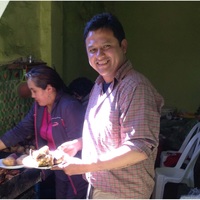

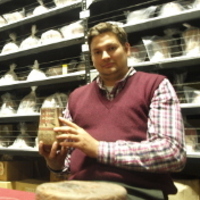
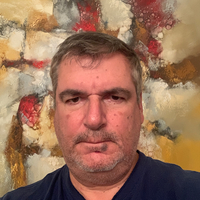
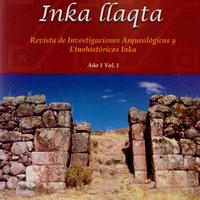
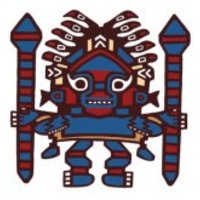


Uploads
Papers by Alexander Herrera
hundred such aerophones, some fashioned from marine conches others modelled in pottery; bringing together results from experiments in the production, performance techniques and acoustic characterization of Caribbean (Strombus gigas and Turbinella angulata) and Pacific (Strombus galeatus, Strombus peruvianus, Malea ringens, and Triplofusus princeps) gastropod species. Application of Mel spectral coefficients (MFCC) to semianechoic chamber recordings allowed a characterization of the sound of each species. During ensemble performances specific tone combinations required for the production of beats were detected and low frequency Tartini tones were perceived. The diversity of distinct timbres within a specific tonal range suggests that the production of ceramic aerophones was not necessarily linked to the availability of natural conch shells but guided by acoustic choice.
Linguistic and ethnohistoric reviews shed light on performance practices and meanings at the time of conquest. Contextual analysis of thin sections of ceramic shell horns excavated in Keushu (Yungay, Ancash, Peru) and dated to the Early Intermediate Period and early Middle Horizon (c. 2200–1600 BP) suggests the agency of specialist itinerant potters. Crafting processes are reconstructed by bringing together material analysis (petrography, X-ray tomography, X-ray diffraction), bioarchaeology, studies of instrument organology, and ceramic ethnoarchaeology.
Informed by experimental reconstruction distinct modeling techniques are distinguished and crossed with available provenience data to suggest three independently arising traditions or hotspots in northern Ecuador, on the central Andean coast, and in the highlands of northern Peru. The ritual sounds and soundscapes
of the latter area are discussed. Like earlier conch horns, ceramic shell horns played a pivotal part in ritual performances that accompanied the development of irrigation-dependent agrarian and pastoral lifeways in the Andes. Enduring symbolic linkages between shell horn sounds, the sea and irrigation water may indeed represent
a powerful embodiment of the voice of God.
The abandonment of indigenous and traditional ways of relating to the landscape and making use of the environment are historically tied, since the epoch of conquest, to the imposition of development models that respond to foreign demands. Social scientists have variously integrated the concept of development as an analytical tool, with differing foci and applications, despite a broader and persistent tendency to relate the idea chiefy to economic growth and eschew social progress. This paper critically addresses the theoretical implications of an ecological approach to the recovery of indigenous technologies in the Andean area, on the basis of experiences in Bolivia, Ecuador and Peru. Its objective is to learn from past mistakes and recast the recovery of indigenous technologies as an effective strategy to articulate viable alternatives for local communities in the fields of agriculture, herding and agroforestry."
hundred such aerophones, some fashioned from marine conches others modelled in pottery; bringing together results from experiments in the production, performance techniques and acoustic characterization of Caribbean (Strombus gigas and Turbinella angulata) and Pacific (Strombus galeatus, Strombus peruvianus, Malea ringens, and Triplofusus princeps) gastropod species. Application of Mel spectral coefficients (MFCC) to semianechoic chamber recordings allowed a characterization of the sound of each species. During ensemble performances specific tone combinations required for the production of beats were detected and low frequency Tartini tones were perceived. The diversity of distinct timbres within a specific tonal range suggests that the production of ceramic aerophones was not necessarily linked to the availability of natural conch shells but guided by acoustic choice.
Linguistic and ethnohistoric reviews shed light on performance practices and meanings at the time of conquest. Contextual analysis of thin sections of ceramic shell horns excavated in Keushu (Yungay, Ancash, Peru) and dated to the Early Intermediate Period and early Middle Horizon (c. 2200–1600 BP) suggests the agency of specialist itinerant potters. Crafting processes are reconstructed by bringing together material analysis (petrography, X-ray tomography, X-ray diffraction), bioarchaeology, studies of instrument organology, and ceramic ethnoarchaeology.
Informed by experimental reconstruction distinct modeling techniques are distinguished and crossed with available provenience data to suggest three independently arising traditions or hotspots in northern Ecuador, on the central Andean coast, and in the highlands of northern Peru. The ritual sounds and soundscapes
of the latter area are discussed. Like earlier conch horns, ceramic shell horns played a pivotal part in ritual performances that accompanied the development of irrigation-dependent agrarian and pastoral lifeways in the Andes. Enduring symbolic linkages between shell horn sounds, the sea and irrigation water may indeed represent
a powerful embodiment of the voice of God.
The abandonment of indigenous and traditional ways of relating to the landscape and making use of the environment are historically tied, since the epoch of conquest, to the imposition of development models that respond to foreign demands. Social scientists have variously integrated the concept of development as an analytical tool, with differing foci and applications, despite a broader and persistent tendency to relate the idea chiefy to economic growth and eschew social progress. This paper critically addresses the theoretical implications of an ecological approach to the recovery of indigenous technologies in the Andean area, on the basis of experiences in Bolivia, Ecuador and Peru. Its objective is to learn from past mistakes and recast the recovery of indigenous technologies as an effective strategy to articulate viable alternatives for local communities in the fields of agriculture, herding and agroforestry."
Objetivos:
. Proporcionar conocimientos sobre la historia cultural de la región, así como los principales métodos de campo de la arqueología, poniendo énfasis en el estudio de las tecnologías prehispánicas e indígenas, los paisajes culturales resultantes y los itinerarios turísticos derivados de estos estudios.
. Mostrar y discutir el lugar de diferentes herramientas como la arqueología, la interpretación del patrimonio, la puesta en uso social y el turismo cultural en el marco de los diferentes modelos de gestión del patrimonio cultural.